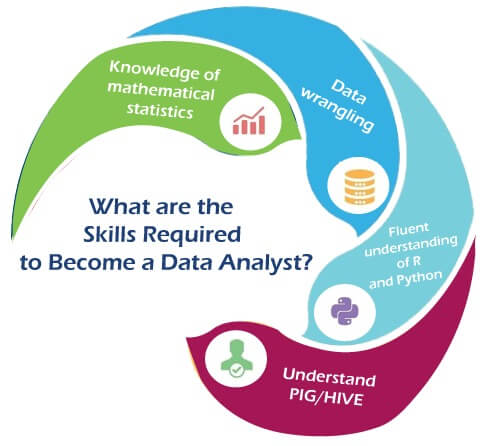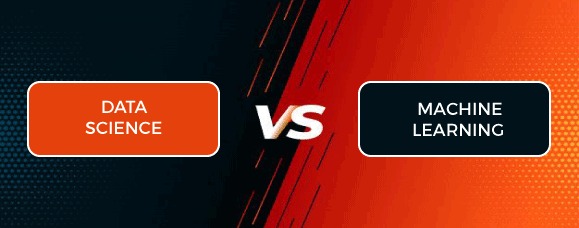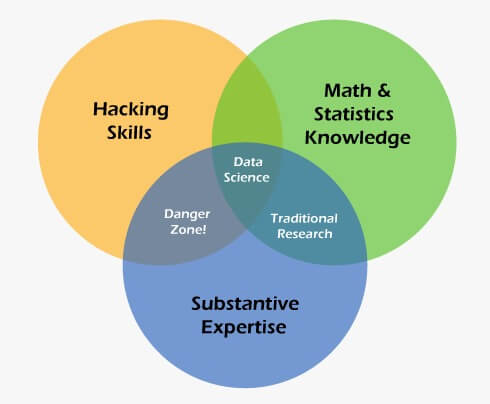Data Science Vs. Machine Learning Vs. Big DataData Science, Machine Learning, and Big Data are all buzzwords in today's time. Data science is a method for preparing, organizing, and manipulating data to perform data analysis. After analyzing data, we need to extract the structured data, which is used in various machine learning algorithms to train ML models later. Hence, these three technologies are interrelated with each other, and together they provide unexpected outcomes. Data is the most important key player in this IT world, and all these technologies are based on data. 
Data Science, Machine Learning, and Big Data are all the hottest technologies in the entire world and growing exponentially. All big, as well as small-size companies, are now looking for IT professionals who can shift through the goldmine of data and help them drive smooth business decisions efficiently. Data science, Big Data, and machine learning are crucial terms that help businesses to grow and develop as per the current competitive situation. In this topic, "Data Science vs. Machine Learning vs. Big Data", we will discuss the basic definition and required skills to learn them. Also, we will see the basic difference between Data Science, ML, and Big data. So, let's start with a quick introduction of all one by one. What is Data Science?Data science is defined as the field of study of various scientific methods, algorithms, tools, and processes that extract useful insights from a vast amount of data. It also enables data scientists to discover hidden patterns from raw data. This concept allows us to deal with Big Data that including extraction, organizing, preparation, and analyzing. Data can be either structured or unstructured both. Data Science helps us to transform a business problem into a research project and then transform it into a practical solution again. The term Data Science has emerged because of the evolution of mathematical statistics, data analysis, and big data. Skills required for Data ScienceIf you are looking to shift your career in Data Science, then you must have in-depth knowledge of mathematics, statistics, programming, and analytical tools. Below are some important skills that you should have before entering this domain.
What is Machine Learning?Machine Learning is defined as the subset of Artificial Intelligence that enables machines/systems to learn from past experiences or trends and predict future events accurately. It helps the systems to learn from sample/training data and predicts results by teaching itself with various algorithms. An ideal machine learning model does not require human intervention too; however, still, such ML models are not in existence. The use of Machine Learning can be seen in various sectors such as healthcare, infrastructure, science, education, banking, finance, marketing, etc. Skills required for Machine Learning
Below are a few skills sets that you should have to build a career in this domain:
What is Big Data?Big data is huge, large, or voluminous data, information, or the relevant statistics acquired by large organizations that are difficult to process by traditional tools. Big data can analyze structured, unstructured or semi-structured. Data is one of the key players to run any business, and it is exponentially increasing with passes of time. Before a decade, organizations were capable of dealing with gigabytes of data only and suffered problems with data storage, but after emerging Big data, organizations are now capable of handling petabytes and exabytes of data as well as able to store huge volumes of data using cloud and big data frameworks such as Hadoop, etc. Big Data is used to store, analyze and organize the huge volume of structured as well as unstructured datasets. Big Data can be described mainly with 5 V's as follows:
Skills required for Big Data
Difference between Data Science and Machine Learning
Data science and machine learning both technologies are both the most searched buzzword in the 21st century among all data scientists, machine learning engineers, and professionals. All small, mid, and large-sized companies like Amazon, Facebook, Netflix, etc., are using these technologies to run and grow their businesses. When it comes to the difference between Data science and machine learning technologies, Drew Conway's Venn Diagram is the best option to understand this. 
In the above diagram, there are three primary sections that everyone must have a look at. These are as follows: Hacking Skill: These are the skills such as organizing data, learning vectorized operations, and thinking algorithmically like a computer that makes a skilled data hacker. Maths and Statistics Knowledge: After storing and cleaning data, we must know appropriate mathematical and statistical methods. You must have a good understanding of ordinary least squares regression. Substantive Expertise: This is also an important common term that helps you to erase all your confusion. Below is the difference table between data science and machine learning.
Difference between Big Data and Machine LearningBig Data deals with a huge volume of data that helps us to discover patterns and trends as well as make decisions related to human behavior and interaction technology. On the other hand, machine learning is the study of learning machines/computers automatically and predicting results from past data using algorithms. Machine learning uses algorithms to train models and make predictions. However, machine learning requires bulk data that is possible using 'Big data'. It helps to extract data from structured as well as unstructured data from the huge volume of datasets, later which is used to train machine learning models as an input. Below is the table to understand the difference between Machine Learning and Big Data.
Difference between Big data and Data ScienceBig data: Big data is huge, large, or voluminous data, information, or the relevant statistics acquired by large organizations that are difficult to process by traditional tools. It is referred to as the study of collecting and analyzing the huge volume of data sets to find a hidden pattern that helps in stronger decision-making for the firms using specialized software and analytical tools. Big data can be structured, unstructured, or semi-structured. Big Data is used to store, analyze and organize the huge volume of structured as well as unstructured datasets. Big Data can be described mainly with 5 V's such as Volume, Variety, velocity, value, and Veracity. Data Science: Data science is the study of working with a huge volume of data and enables data for prediction, prescriptive, and prescriptive analytical models. It helps to discriminate useful and raw data/insights from the vast amount of data sets using various scientific methods, algorithms, tools, and processes. It includes digging, capturing, analyzing, and utilizing the data from a vast volume of datasets. It is a combination of various filed such as computer science, machine learning, AI, Mathematics, business, and statistics. Let's discuss some major differences between Data Science and Big Data in the below table.
Conclusion:Machine learning, data science, and Big data are all the most popular technologies, which are widely being used in the entire world. Although these technologies have their significance individually, when combining them, they became more powerful to work on models/projects. Big data technology is a huge source of data, Data science is a technology that extracts useful insights from big data, and this useful information is used in machine learning for teaching machines or computers to predict future results based on past experience and build strong decision-making capability.
Next TopicPopular Machine Learning Platforms
|
 For Videos Join Our Youtube Channel: Join Now
For Videos Join Our Youtube Channel: Join Now
Feedback
- Send your Feedback to [email protected]
Help Others, Please Share










